
Roots
In the quiet hours of night, as the world settles into slumber, our hair, particularly coily strands, meets its nightly companion ❉ the pillowcase. This seemingly simple interaction, often overlooked, holds a profound influence on the vitality of our hair. To truly appreciate this relationship, we must first journey into the very structure of coily hair itself, understanding its inherent characteristics and how they interact with the surfaces it encounters during rest.
The anatomy of a single hair strand is a marvel of biological design. Each strand, emerging from its follicle, comprises three principal layers. The innermost layer, the medulla, is not always present, particularly in finer hair types. Surrounding this is the cortex, the primary bulk of the hair, responsible for its strength, elasticity, and color.
It is a fibrous structure of keratin proteins, twisted and bundled. The outermost layer, the cuticle, acts as the hair’s protective shield. Composed of overlapping, scale-like cells, much like shingles on a roof, the cuticle’s integrity is paramount to hair health. When these scales lie flat, the hair reflects light, appears smooth, and retains moisture effectively. When they are raised or compromised, hair can feel rough, appear dull, and lose precious hydration.
Coily hair, often classified as Type 4, possesses a distinct and exquisite architecture. Unlike straight hair, which grows from round follicles, coily hair springs from oval or asymmetrical follicles, causing it to grow in tight, helical spirals. This unique shape means that the natural oils produced by the scalp, which serve as hair’s innate conditioner, struggle to travel down the length of the strand. This inherent difficulty in oil distribution contributes to coily hair’s propensity for dryness.
Furthermore, the cuticle layers of coily hair are often naturally more raised or less tightly adhered than those of straighter hair types, even in healthy states. This structural reality makes coily strands more susceptible to environmental aggressors and mechanical stress, increasing the potential for moisture loss and breakage.
The nightly encounter between coily hair and pillowcase initiates a silent conversation between fiber and filament, dictating the subsequent day’s hair story.
Understanding the physical interaction at play requires a look into tribology, the science of friction, wear, and lubrication between surfaces in relative motion. When coily hair moves against a pillowcase during sleep—whether through tossing, turning, or simply the gentle shifting of the head—friction occurs. This friction can manifest as a subtle abrasive force, capable of lifting and damaging the delicate cuticle scales. The degree of this friction is heavily influenced by the material composition and surface texture of the pillowcase.
A rougher, more absorbent material will create greater friction, leading to more significant cuticle disruption and, consequently, a cascade of detrimental effects on hair health. Conversely, a smoother, less absorbent material minimizes this abrasive interaction, preserving the cuticle’s integrity and, by extension, the hair’s moisture and strength.
The journey of coily hair health begins with this fundamental understanding of its structure and its nocturnal environment. Recognizing the intrinsic vulnerabilities of coily strands and the physical forces at play during sleep lays the groundwork for making choices that support, rather than detract from, hair vitality.
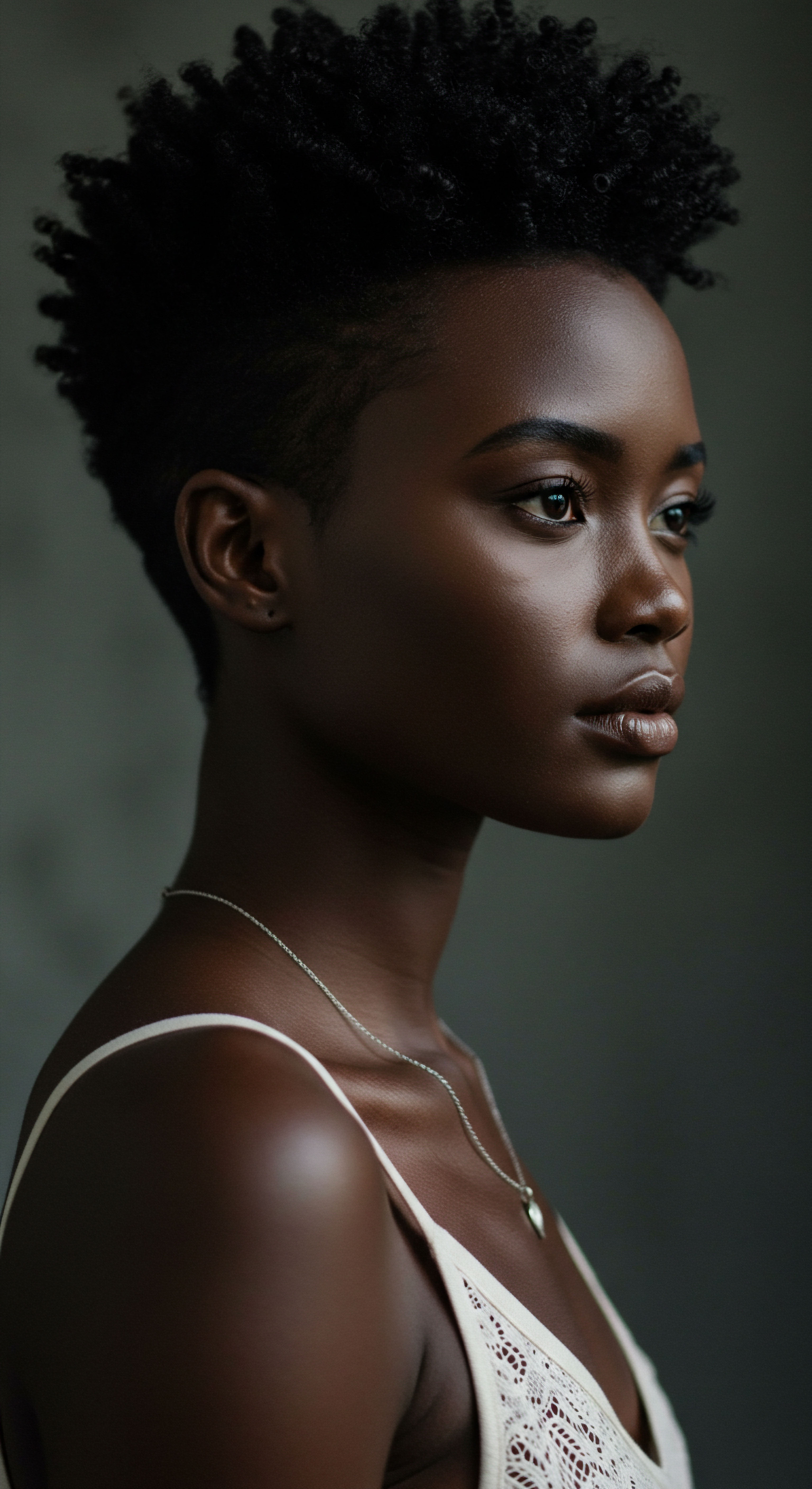
Ritual
The transition from day to night, for those with coily hair, often involves a deliberate practice, a quiet commitment to preserving the beauty and health of their strands. This nightly ritual, extending beyond mere preparation for sleep, becomes a vital act of care. It is within this sacred time that the choice of pillowcase material steps forward from the background, revealing its significant role in the ongoing dialogue of hair wellness.
Our hair, especially coily hair, is most vulnerable to external stressors while we sleep. The hours spent in repose, seemingly static, are actually dynamic periods of potential friction and moisture loss. Traditional pillowcase materials, particularly cotton, are notorious for their absorbent qualities. While this absorbency is desirable for bath towels, helping to dry hair quickly, it becomes a disadvantage when applied to a pillowcase.
Cotton fibers, with their porous structure, readily draw moisture from the hair, including its natural oils and any applied conditioning products. This moisture stripping can leave coily hair feeling parched, leading to increased frizz, tangles, and a heightened susceptibility to breakage.
Beyond moisture absorption, the surface texture of cotton creates considerable friction. As coily hair moves against the slightly abrasive surface of a cotton pillowcase, the delicate cuticle layers are subjected to constant rubbing. This mechanical stress can cause the cuticle scales to lift, roughen, and even chip away, exposing the inner cortex to damage. The consequence is often visible upon waking ❉ a nest of tangles, a halo of frizz, and a feeling of dryness that undermines the efforts of daytime care.
A thoughtful nightly hair ritual, centered on the right pillowcase, transforms sleep into a restorative period for coily hair.
Conversely, materials like silk and satin offer a stark contrast in their interaction with coily hair. These fabrics possess a smooth, tightly woven surface that allows hair to glide effortlessly across them. This significantly reduces the friction that leads to cuticle damage and tangling.
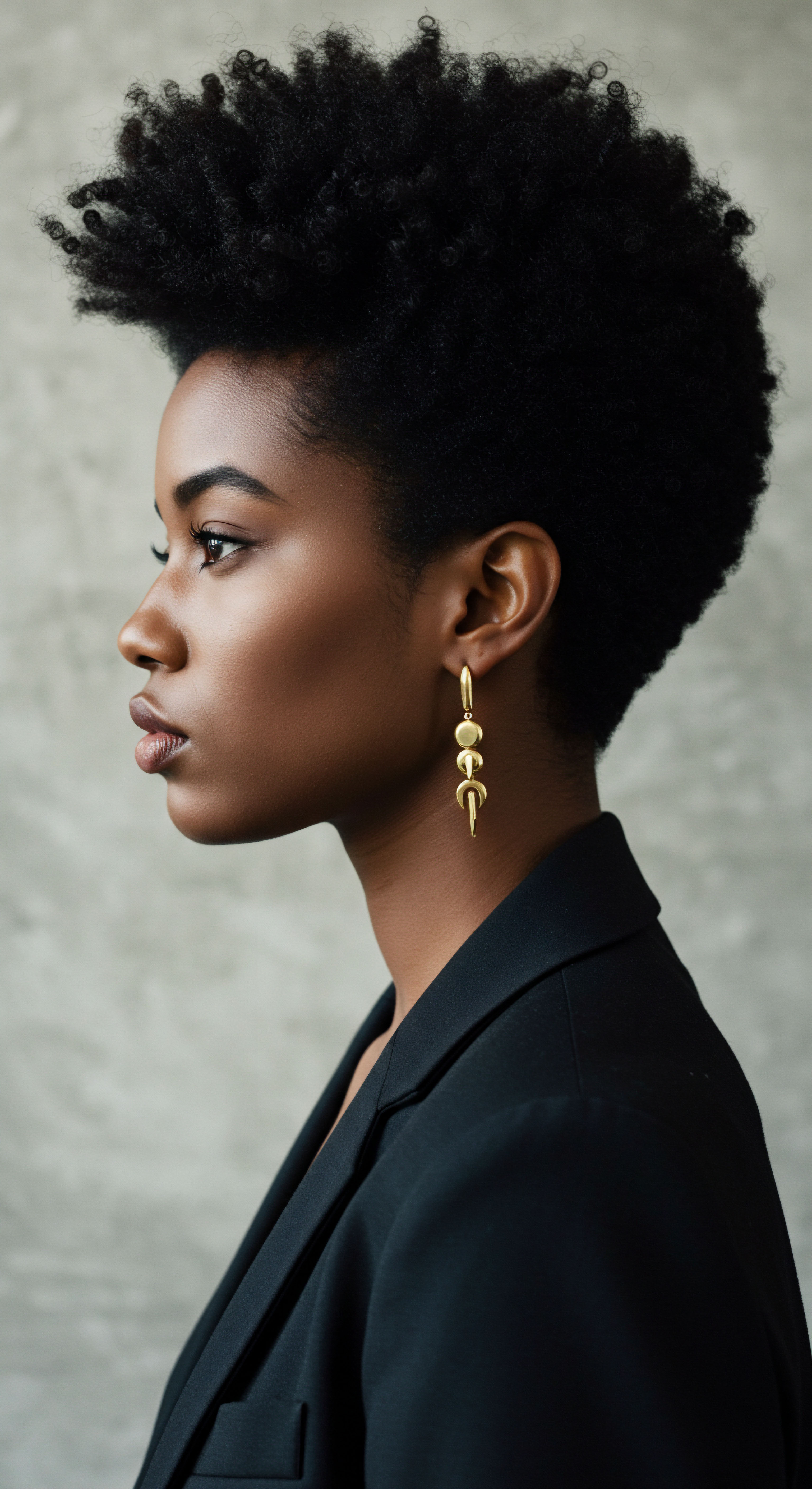
What Benefits Do Smooth Materials Provide for Coily Hair?
- Reduced Friction ❉ The smooth surface of silk or satin minimizes mechanical stress on the hair shaft. This helps to keep the cuticle layers lying flat, preserving the hair’s natural sheen and reducing frizz.
- Moisture Retention ❉ Unlike cotton, silk and satin are far less absorbent. They do not readily draw moisture from the hair, allowing natural oils and applied products to remain on the strands, promoting sustained hydration. This is particularly beneficial for coily hair, which naturally struggles with moisture retention.
- Minimized Tangles and Breakage ❉ With less friction and snagging, hair is less likely to tangle overnight. This translates to fewer knots upon waking, reducing the need for aggressive detangling, which is a common cause of breakage in coily hair.
The practice of protecting coily hair at night has deep roots in cultural traditions, particularly within Black communities. For generations, head coverings like bonnets and scarves, often made from silk or satin, have been utilized as a standard practice for preserving hairstyles and maintaining hair health during sleep. This tradition underscores a collective understanding of hair’s vulnerability during rest and the protective power of smooth fabrics. It is a testament to the wisdom passed down through families, long before scientific studies quantified the benefits.
Incorporating a silk or satin pillowcase into one’s nightly regimen is a simple yet powerful step in nurturing coily hair. It transforms the act of sleeping from a potential source of damage into a period of restoration, allowing the hair to maintain its moisture, reduce tangles, and preserve its delicate structure, preparing it for the day ahead.
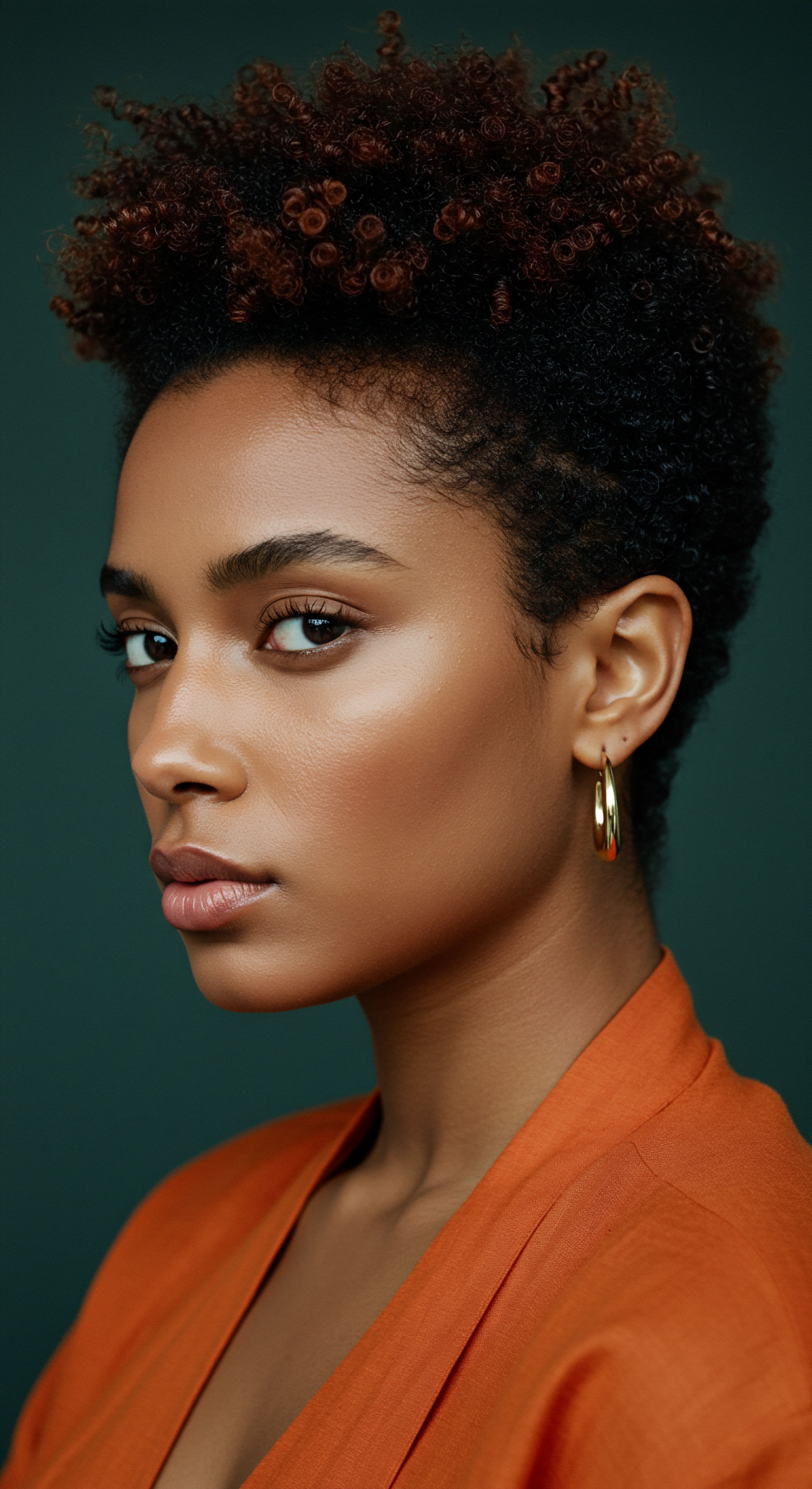
Relay
Beyond the immediate tactile experience, how deeply does the pillowcase material truly alter the fundamental state of coily hair over time? This query invites us into a sophisticated exploration, where the microscopic interactions between textile and hair fiber unveil profound implications for long-term health, bridging the realms of material science, hair biology, and cultural practice. The choice of sleep surface, far from a mere comfort preference, acts as a silent, continuous variable in the complex equation of coily hair vitality.
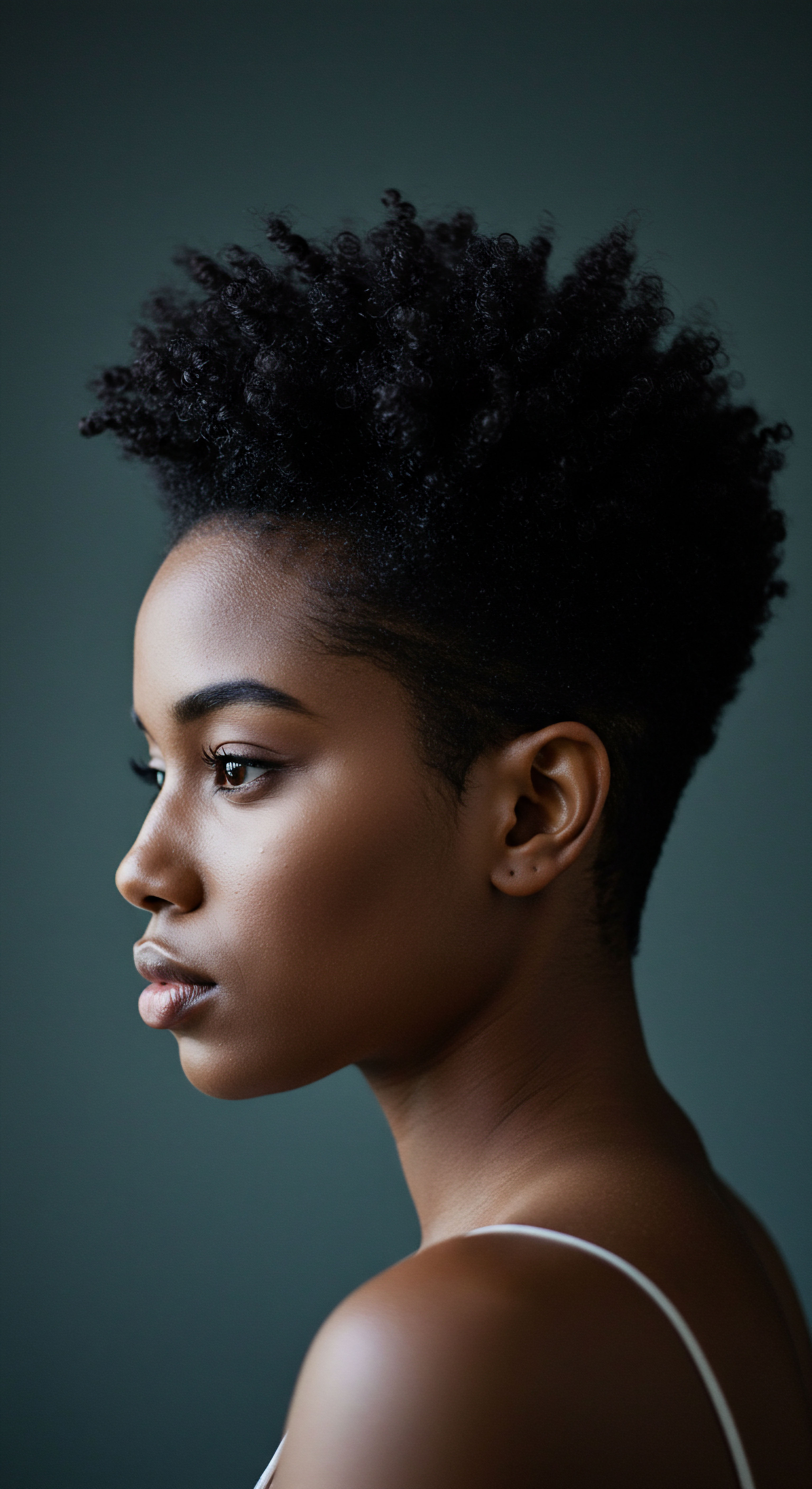
The Microscopic Dance of Friction and Cuticle Integrity
At the heart of the pillowcase’s influence lies the concept of tribology, the study of interacting surfaces in relative motion. Hair fibers, especially those with the inherent bends and twists of coily patterns, are particularly susceptible to the effects of friction. Each movement against a sleep surface generates mechanical stress. The outermost layer of the hair, the cuticle, is comprised of keratin scales that ideally lie flat, overlapping like roof tiles.
When hair rubs against a coarse surface, these scales are lifted, abraded, and even chipped away. This damage compromises the hair’s protective barrier, leading to several undesirable outcomes.
A study investigating the friction coefficients of various textile materials against human hair, including African hair, found that Cotton Consistently Exhibited the Highest Friction Coefficient compared to nylon and polyester, especially at lower loads. This quantifiable difference in frictional properties translates directly to the degree of mechanical stress exerted on hair fibers. Higher friction means greater snagging, pulling, and abrasion, accelerating cuticle degradation. Conversely, silk, a natural protein fiber, boasts an exceptionally smooth surface due to its long, continuous filaments, resulting in significantly lower friction.
Research indicates that the smooth surface of a silk pillowcase can reduce hair friction by up to 43% compared to other fabrics. This substantial reduction in friction preserves the integrity of the hair cuticle, minimizing the lifting and erosion of its protective scales.
Consider the cumulative effect of nightly friction over months and years. For coily hair, already prone to dryness and fragility due to its elliptical shape and the difficulty of natural oil distribution, this constant abrasion exacerbates existing vulnerabilities. Damaged cuticles struggle to retain moisture, leading to chronic dryness, increased porosity, and a heightened risk of breakage. The hair becomes dull, loses its definition, and is more susceptible to environmental damage.
The subtle friction between hair and pillowcase, though unseen, holds significant sway over the long-term health and moisture retention of coily strands.
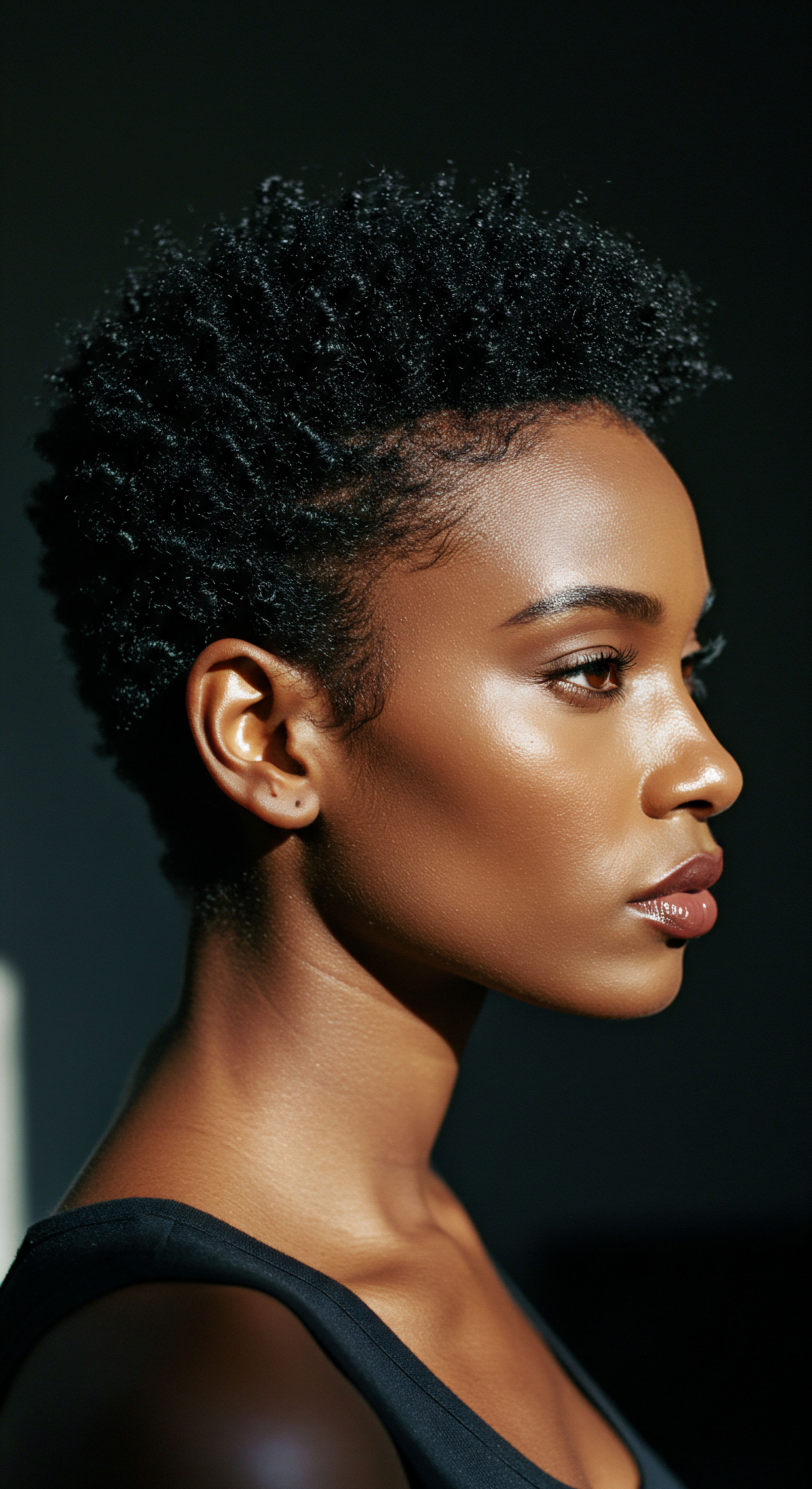
Moisture Dynamics and Hair Porosity
Beyond friction, the hygroscopic properties—the ability to absorb moisture from the air—of pillowcase materials play a decisive role. Cotton, a natural cellulose fiber, is highly absorbent. While this characteristic is beneficial for towels, allowing them to soak up water, it becomes a detriment when applied to hair during sleep.
A cotton pillowcase acts like a sponge, drawing out the hair’s natural sebum, applied conditioners, and even the hair’s inherent water content. This desiccation contributes to a cycle of dryness, making coily hair feel brittle and less pliable.
Hair porosity, which refers to the hair’s ability to absorb and retain water and substances, is directly impacted by cuticle health. When the cuticle is compromised by friction and moisture stripping, the hair becomes more porous. High porosity hair readily absorbs water, but it loses that water just as quickly, leading to a constant state of dehydration and frizz. This is particularly challenging for coily hair, which already has a tendency towards higher porosity due to its structural characteristics.
Silk, composed primarily of fibroin protein, is far less absorbent than cotton. It allows the hair to retain its moisture, natural oils, and styling products. This difference in moisture absorption is critical for coily hair, as it helps to maintain the delicate moisture balance necessary for elasticity and resilience. When hair remains adequately hydrated overnight, it is less prone to frizz, tangles, and breakage, preserving its structural integrity and promoting healthier growth.

Cultural Resonance and Practical Wisdom
The contemporary understanding of pillowcase materials echoes centuries of protective hair practices within textured hair communities. The tradition of wearing silk or satin bonnets and scarves at night, a deeply ingrained ritual in many African and Afro-Caribbean cultures, was born from an intuitive understanding of hair’s needs. These practices, passed down through generations, served to shield delicate strands from the harshness of sleep surfaces, preserving moisture and preventing tangles. This historical wisdom, rooted in lived experience and cultural continuity, now finds scientific validation in studies on friction and moisture transfer.
For instance, the practice of wrapping hair, a form of protective styling, has been a cornerstone of nighttime hair care for many Black women. This not only minimizes friction and frizz from bedding but also helps to maintain existing styles, reducing the need for daily manipulation that can lead to breakage. The very act of preparing hair for rest with a smooth covering is a testament to the deep care and cultural significance attributed to coily hair.
| Material Cotton |
| Surface Texture Rough, textured |
| Moisture Absorbency High |
| Friction Coefficient (Relative) High |
| Impact on Coily Hair Increased dryness, frizz, tangles, cuticle damage, breakage |
| Material Silk |
| Surface Texture Smooth, slick |
| Moisture Absorbency Low |
| Friction Coefficient (Relative) Low |
| Impact on Coily Hair Retains moisture, reduces frizz, minimizes tangles, preserves cuticle, less breakage |
| Material Satin (Polyester) |
| Surface Texture Smooth, slippery |
| Moisture Absorbency Low |
| Friction Coefficient (Relative) Low |
| Impact on Coily Hair Similar to silk in reducing friction and moisture loss, more affordable |
| Material This table illustrates the fundamental differences in how common pillowcase materials interact with coily hair. |

Long-Term Repercussions and Empowered Choices
The cumulative effect of nightly pillowcase interaction on coily hair health is substantial. Consistent exposure to high-friction, absorbent materials leads to a chronic state of dryness, cuticle damage, and increased breakage. This impedes length retention, diminishes natural shine, and makes the hair more challenging to manage. Conversely, regularly sleeping on a smooth, low-friction surface such as silk or satin can dramatically alter this trajectory.
The hair retains its natural moisture balance, the cuticle layers remain smoother, and the overall integrity of the hair shaft is preserved. This leads to reduced frizz, fewer tangles, and ultimately, healthier, stronger strands that can reach their full growth potential. The benefits extend beyond mere aesthetics, touching upon the daily experience of ease in styling and the confidence that comes with well-cared-for hair. Choosing the right pillowcase material is not a trivial decision; it is a foundational element of a holistic approach to coily hair wellness, reflecting a deep respect for its unique needs and inherent beauty.
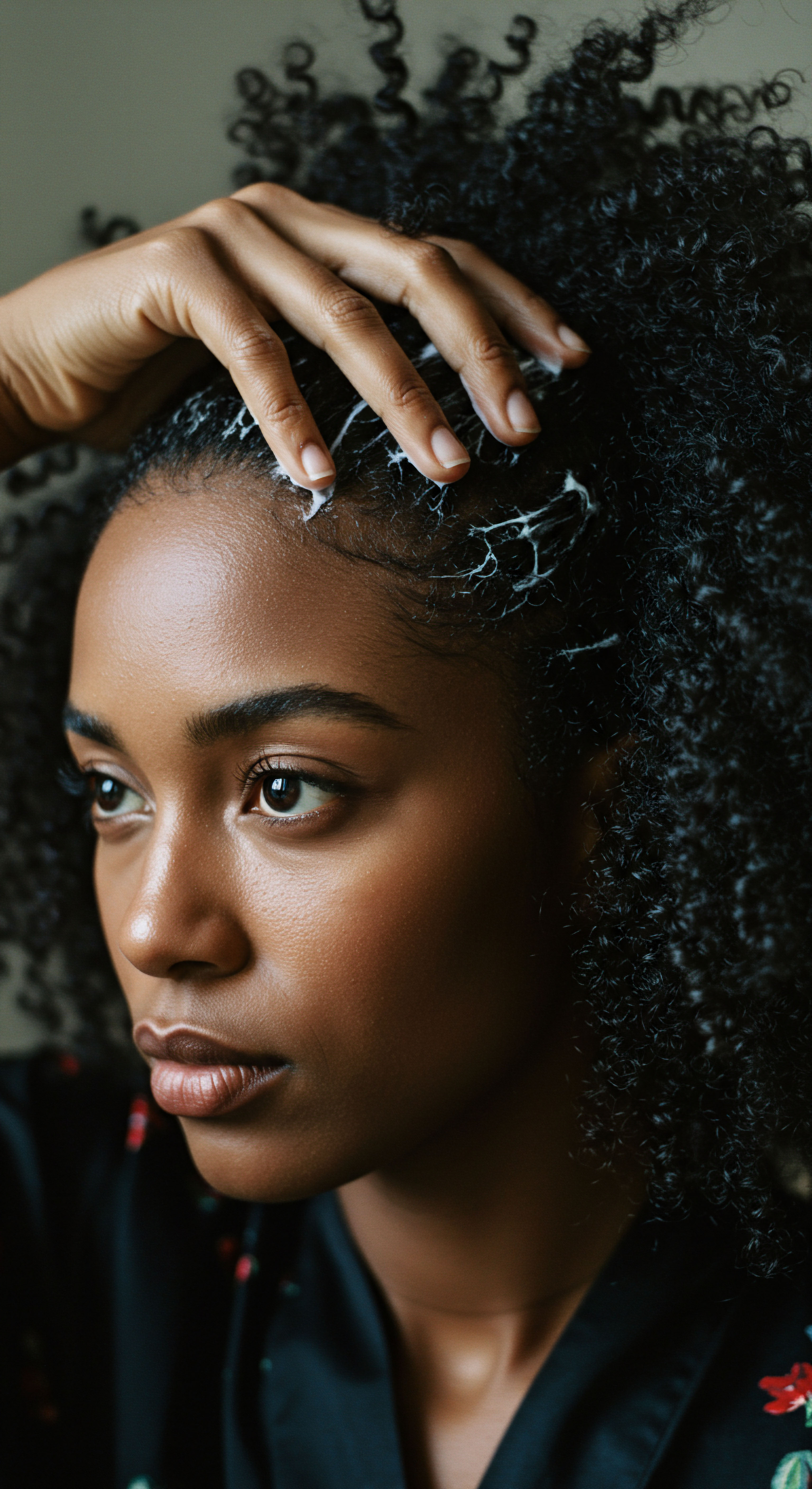
Reflection
As the moon traces its arc across the night sky, and we surrender to the quiet rhythm of sleep, the seemingly small details of our environment continue their subtle work. The pillowcase, a soft landscape for our dreams, silently shapes the very essence of our coily strands. Our exploration has traversed the delicate architecture of hair, the nuanced physics of friction, and the deep cultural currents that have long understood the protective power of the night.
It is a reminder that genuine care often resides in the quiet, consistent choices we make, honoring the unique needs of our hair with both scientific understanding and intuitive wisdom. May your nights be as restorative for your spirit as they are for your magnificent coily hair.

References
- Ali, W. Y. (2014). Friction Coefficient and Electric Static Charge of Head Scarf Textiles. Journal of the Egyptian Society of Tribology, 11(2), 25-36.
- Audoly, B. & Audoly, B. (2007). Knotting of elastic rods. Physical Review Letters, 99(16), 164301.
- Chou, M. C. & Lu, W. H. (2012). Effect of hair properties on friction force of hair tresses. Journal of Cosmetic Science, 63(2), 101-110.
- Gammon, C. (2014). Tribology Goes Soft. Chemical & Engineering News, 92(25), 32-34.
- Johnson, D. A. & Milligan, A. (2021). Techniques Used for Hair Style Maintenance while Sleeping May Be a Risk Factor for Traction Alopecia. Journal of Clinical and Aesthetic Dermatology, 14(2), 40–42.
- Kim, H. J. & Lee, W. R. (2010). Effects of hair care products on hair friction properties. Journal of Cosmetic Science, 61(6), 441-452.
- Marsh, J. (2006). Hair Care ❉ An Illustrated History. Dover Publications.
- Robbins, C. R. (2012). Chemical and Physical Behavior of Human Hair (5th ed.). Springer.
- Sharma, V. & Singh, J. (2018). Impact of different pillowcase materials on hair damage ❉ A comparative study. International Journal of Textile and Fashion Technology, 8(2), 1-8.
- Wilkinson, J. B. & Moore, R. J. (2009). Harry’s Cosmeticology (8th ed.). Chemical Publishing Company.